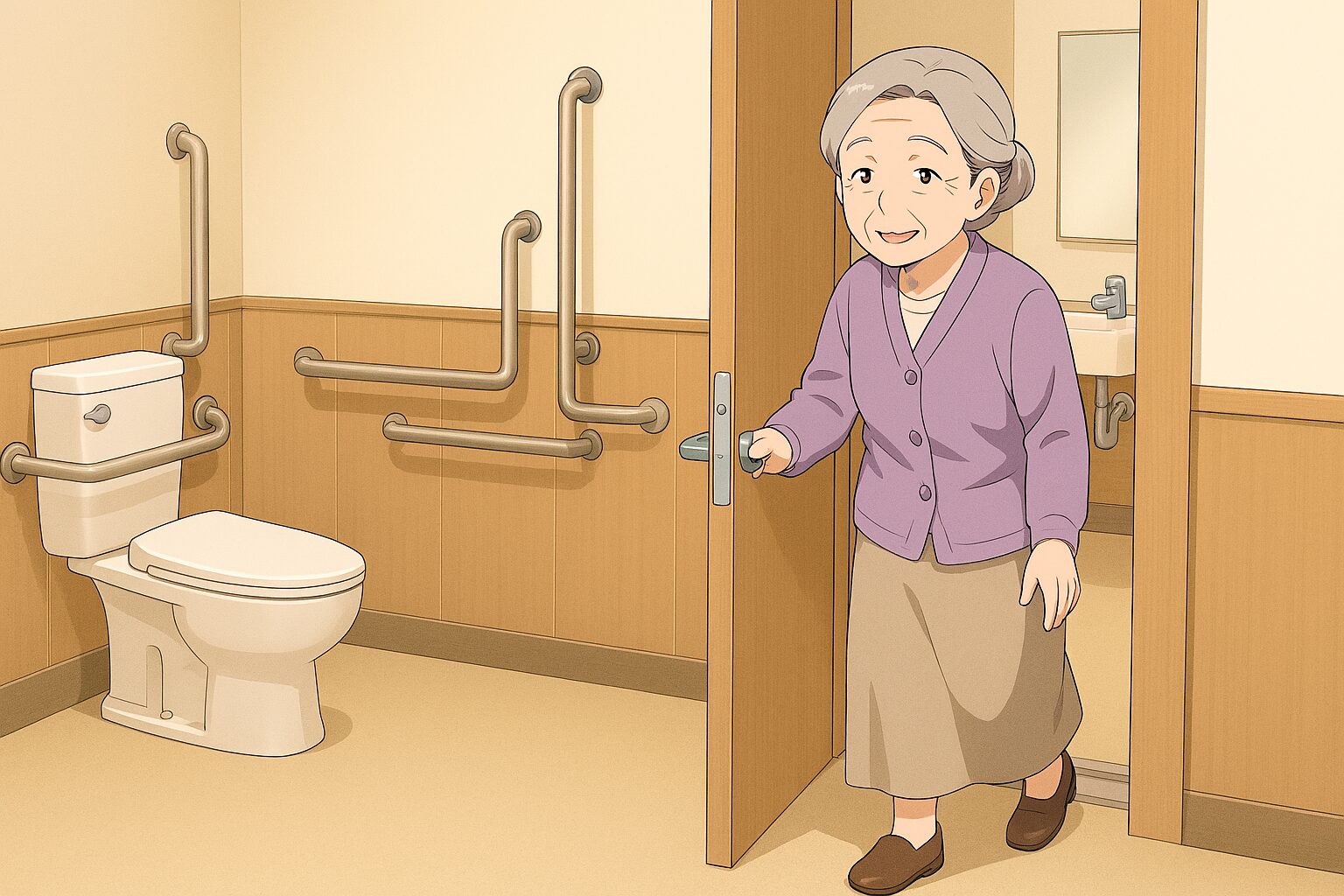In Japan, toilets are more than just functional spaces—they are reflections of cultural values, technological innovation, and social responsibility. As the country faces one of the most rapidly aging populations in the world, the humble toilet has evolved into a symbol of care, dignity, and inclusivity.
This article explores how Japan’s toilet culture is adapting to meet the needs of its elderly citizens, offering insights into design philosophy, public policy, and everyday life. Whether you’re a traveler, a designer, or simply curious about how a nation integrates compassion into infrastructure, Japan’s approach to toilets offers a compelling case study.
🧓 Japan’s Aging Population: A National Challenge
Japan is home to one of the oldest populations globally. As of 2025, over 29% of its citizens are aged 65 or older, with projections indicating continued growth in this demographic. This shift presents unique challenges in healthcare, transportation, and—perhaps surprisingly—toilet accessibility.
For many elderly individuals, going out can be a source of anxiety, especially if public facilities are difficult to use. Recognizing this, Japan has made significant strides in designing toilets that support mobility, privacy, and peace of mind.
🛠️ Universal Design: Toilets That Welcome Everyone
Japan’s commitment to universal design ensures that public toilets are accessible to people of all ages and abilities. These features are not limited to hospitals or care homes—they are found in train stations, parks, shopping centers, and even temples.
Key Features Include:
- Wide entrances with automatic sliding doors
- Spacious interiors that allow wheelchair rotation (typically 220cm x 220cm)
- Grab bars on both sides of the toilet, often adjustable
- Emergency call buttons within easy reach
- Baby chairs and diaper changing stations for multigenerational use
- Ostomate-friendly sinks and showers for users with medical needs
These elements are part of what Japan calls barrier-free toilets, designed to eliminate physical and psychological obstacles. For a deeper understanding of how these designs reflect Japanese cultural sensitivity, see: 👉 🇯🇵 The Hidden Wisdom of Japanese Toilets: A Culture of Privacy, Peace and Respect
🏙️ Case Study: The Tokyo Toilet Project
One of the most ambitious public restroom initiatives is The Tokyo Toilet Project, launched in Shibuya with support from The Nippon Foundation. Seventeen public toilets were redesigned by world-renowned architects such as Tadao Ando, Kengo Kuma, and Sou Fujimoto, blending aesthetics with accessibility.
For example, the Nishisando toilet features:
- Multiple faucet heights for children, adults, and wheelchair users
- Priority facilities for elderly people and expecting mothers
- Warm lighting and organic shapes that create a calming atmosphere
- A central hand-washing area that encourages community interaction
These toilets are cleaned multiple times a day and inspected monthly, reflecting Japan’s cultural emphasis on hygiene and hospitality.
🧘 Toilets as Spaces of Dignity and Peace
In Japanese culture, the toilet is often seen as a place of cleansing—not just physically, but spiritually. This philosophy is evident in the way toilets are maintained and respected.
Many elderly Japanese grew up with the idea that cleaning the toilet is a form of self-discipline, a concept popularized by figures like Shuzo Kegayama, who promoted toilet cleaning as a path to personal growth. In temples and schools, cleaning is often part of daily routine, reinforcing values of humility and care. This ties into a broader cultural ethos where kindness and mindfulness are embedded even in the smallest details: 👉 🇯🇵 5 Japanese Cultural Surprises That Make Foreigners Smile
🚉 Everyday Examples: Toilets in Public Life
1. Train Stations
Most stations, even in rural areas, offer accessible toilets with clear signage. Some have private key-entry systems to prevent misuse and ensure cleanliness.
2. Airports
Narita and Haneda airports feature high-tech toilets with voice guidance, bidet functions, and touchless controls, designed for elderly travelers and international visitors.
3. Tourist Attractions
Places like Kyoto’s temples or Nara Park offer barrier-free toilets that blend traditional aesthetics with modern functionality. These facilities often include wooden textures, soft lighting, and seasonal decorations, creating a welcoming environment.
Such thoughtful touches in everyday spaces embody Japan’s deep respect for users of all ages: 👉 🇯🇵 Surprising Everyday Japan: A Culture Woven into the Details
🌏 Cultural Export: Japan’s Toilet Philosophy Abroad
Japanese toilet manufacturers like TOTO and INAX have begun exporting their designs globally, promoting not just technology but a philosophy of respect, privacy, and comfort. Features like heated seats, bidets, and deodorizing systems are now found in luxury hotels and airports worldwide.
But beyond the gadgets, it’s Japan’s human-centered approach that resonates most. Toilets are designed not just for convenience, but for empathy—a lesson many countries are beginning to embrace.
🧭 Conclusion: Toilets as Mirrors of Society
In Japan, the toilet is not an afterthought—it’s a carefully considered space that reflects the nation’s values. As the population ages, these spaces become even more vital, offering safety, dignity, and peace to those who need it most.
For international readers, Japan’s toilet culture may seem surprising at first. But behind the technology and design lies a simple truth: caring for others begins in the details.
Whether you’re planning a trip to Japan or rethinking public infrastructure in your own country, there’s much to learn from how Japan treats its toilets—not just as facilities, but as sanctuaries.



コメント